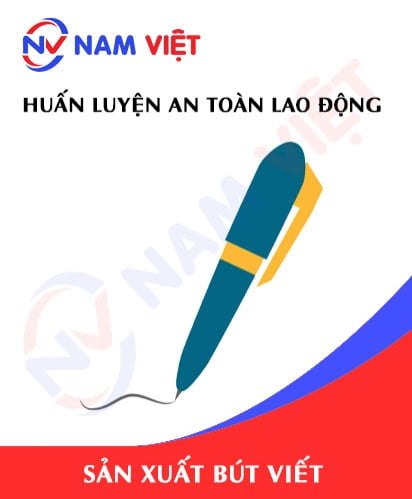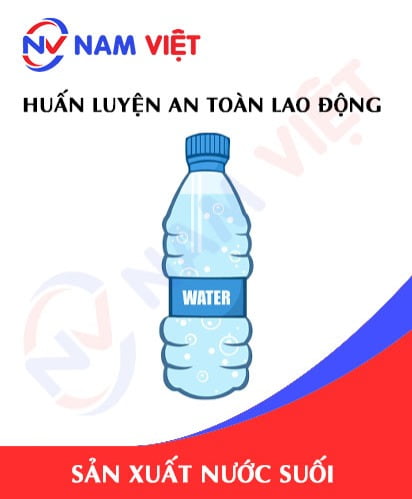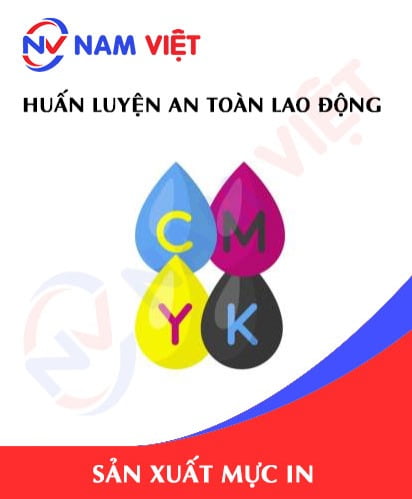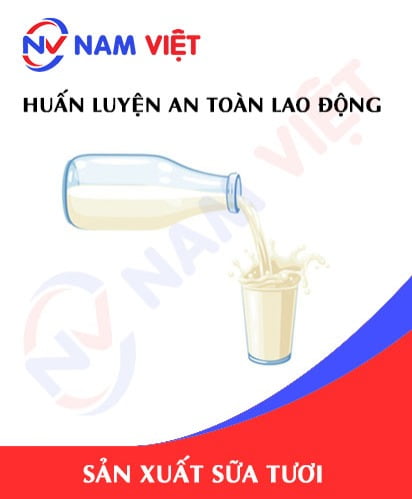Occupational Safety Training for Guitar Manufacturing
99,000 ₫
Note: The above price is calculated per person and may vary depending on the number of trainees participating in the course and market fluctuations. For more accurate pricing information, please refer to the price list or contact our consultants directly.
Occupational safety is an important issue in guitar manufacturing factories and needs to be addressed promptly to ensure the health and safety of workers, as well as to enhance the reputation of businesses. The Occupational Safety Training course is an effective solution to raise awareness about accident prevention for workers involved in guitar production.
Table of Contents
Toggle1. Overview of the Guitar
a. What is a Guitar?
A guitar is a stringed musical instrument played by pressing the strings on frets to produce sound. It is divided into various types such as acoustic guitar, electric guitar, and bass guitar, each with its own characteristics and sound. Guitars are widely used in many music genres, from folk to rock, pop, and many others.

b. Types of Machinery Used in Guitar Manufacturing
- Wood Cutting Machine: Used to cut the necessary wooden components for assembling guitars, including the body, neck, and other accessories.
- Grinding and Sanding Machine: Used to shape and finish the surfaces of wooden parts, making them smooth and meeting design requirements.
- Metal Cutting Machine: Used to produce metal parts such as headstocks, tuning pegs, and other accessories.
- Fret Pressing and Headstock Cutting Machine: Used to produce parts like frets and headstocks, helping adjust sound and playing feel.
- Painting and Finishing Machine: Used to paint and finish guitar surfaces, creating glossy, attractive finishes and ensuring long-lasting protection.
- Electronic Processing Machine: Used in the case of electric guitars to assemble and test electronic systems such as pickups and amplifiers.

c. Famous Guitar Brands
- Fender: Known for its electric and bass guitars, Fender is one of the oldest and most influential brands in rock and pop music.
- Gibson: Gibson produces electric and acoustic guitars, famous for models like the Les Paul and SG, with a strong presence in rock and blues.
- Martin: Martin Guitar specializes in acoustic guitars, renowned for the sound quality and refined designs of models like the Dreadnought and Auditorium.
- Taylor: Taylor Guitars focuses on acoustic guitars, known for modern production technology and designs that deliver crisp sound and excellent playability.
- Ibanez: A well-known brand in electric and bass guitar manufacturing, offering a wide range of models suitable for rock, metal, and jazz.
- PRS (Paul Reed Smith): PRS guitars are known for their high craftsmanship and distinctive sound, catering to many rock and fusion musicians.
- Yamaha: Yamaha not only makes pianos but is also a major guitar manufacturer, producing both acoustic and electric models from affordable to high-end ranges.
- Epiphone: A budget-friendly subsidiary of Gibson, Epiphone offers electric and acoustic guitars with good quality at reasonable prices for players of all levels.

d. Specific Jobs in a Guitar Manufacturing Factory
Group 1
- General Director, Deputy General Director, and department heads in the guitar manufacturing factory.
Group 2
- Safety Officers: Manage safety in the factory, design safety procedures, supervise, and encourage employees to comply with safe working practices.
Group 3
- Wood Processing: Includes cutting, grinding, and shaping guitar bodies, necks, and other wooden components from raw materials.
- Electronics and Metal Assembly: Assembling metal parts such as headstocks, tuning pegs, and other details, as well as installing electronic systems for electric guitars.
- Sanding and Finishing: Sanding and finishing wooden and metal surfaces to create smooth and glossy finishes.
- Painting and Decoration: Painting and decorating the guitar surface, including coloring, image printing, or engraving.
- Assembly and Quality Control: Assembling the guitar body, neck, tuning pegs, and other parts into a complete product, and checking sound quality and appearance before market release.
- Packing and Shipping: Packing finished products and preparing them for delivery to distributors and end customers.
Group 4
- Office work, service, sales, and marketing.
- Production management, quality control, human resources management, materials management, and finance/accounting management.
- Research and development of new products, and packaging design.
2. Overview of the Occupational Safety Training for Guitar Manufacturing
Within the scope of this article, we focus on issues related to Group 3, as Group 3 is directly involved in the production process and faces the highest occupational safety risks. For other groups, refer here.
a. What is Group 3 Occupational Safety Training?
- Group 3 Occupational Safety Training consists of lessons that equip workers with awareness and knowledge on how to prevent occupational accidents.
- The occupational safety training course helps workers identify and avoid hazards, minimizing the risks of workplace accidents during work.
REGISTER FOR OCCUPATIONAL SAFETY TRAINING SERVICE
b. Training Duration
Initial occupational safety training duration
- Total training duration is at least 24 hours, including testing time.
- 8 hours of theory on the system of occupational safety and hygiene policies and laws.
- 8 hours of theory on basic occupational safety and hygiene knowledge.
- 4 hours of theory on industry-specific training content.
- 2 hours of practical training on industry-specific content.
- 2 hours of theory testing at the end of the course.
The safety training center will allocate the time into several sessions depending on the scheduling arrangement for employees. Typically, there will be 6 training sessions over 3 days, provided the manufacturing enterprise can arrange continuous learning time.
Periodic occupational safety training duration
- Before the occupational safety card expires, workers who wish to renew it must complete a periodic occupational safety training course, with a training duration equal to at least 50% of the initial occupational safety training duration.
Explanation: The total duration of periodic occupational safety training is at least 12 hours, including testing time. After completing the periodic training and passing the test, workers will have their occupational safety card renewed.
c. Training Content
| No. | TRAINING CONTENT | TRAINING TIME (HOURS) | |||
| Total | Including | ||||
| Theory | Practice | Test | |||
| I | System of occupational safety and hygiene policies and laws | 8 | 8 | 0 | 0 |
| 1 | Overview of the legal framework on occupational safety and hygiene. | 6 | 6 | ||
| 2 | System of occupational safety and hygiene technical standards and regulations. | 1 | 1 | ||
| 3 | Specific regulations from state management agencies on occupational safety and hygiene when constructing, expanding, or renovating facilities for manufacturing, using, storing, or inspecting machinery, equipment, and materials with strict safety and hygiene requirements. | 1 | 1 | ||
| II | Basic knowledge of occupational safety and hygiene | 8 | 8 | 0 | 0 |
| 1 | Basic knowledge of workplace hazards and harmful factors. | 4 | 4 | ||
| 2 | Methods to improve working conditions. | 1 | 1 | ||
| 3 | Safety culture in production and business. | 1 | 1 | ||
| 4 | Rights and obligations of employers and employees; occupational safety and hygiene policies for workers; functions and responsibilities of the workplace safety and hygiene network. | 1 | 1 | ||
| 5 | Occupational safety and hygiene rules, safety signs, instructions, and use of safety equipment and personal protective equipment; skills in first aid for occupational accidents, and prevention of occupational diseases. | 1 | 1 | ||
| III | Industry-specific training content | 6 | 4 | 2 | 0 |
| Comprehensive knowledge of machinery, equipment, and substances that generate hazardous and harmful factors; risk analysis, assessment, and management in occupational safety and hygiene; safe working procedures with machinery, equipment, and substances requiring strict safety and hygiene measures. | 6 | 4 | 2 | ||
| IV | Final test on occupational safety training content | 2 | 2 | 0 | 0 |
| Total | 24 | 22 | 2 | ||
See more about the training content for all 6 groups.
d. Occupational Safety Card
After completing the occupational safety training and passing the test, workers will be issued an Occupational Safety Card (commonly referred to as a Group 3 Occupational Safety Certificate).
The Group 3 safety card clearly states information such as full name, date of birth, job title, and specific working environment. It also includes training duration, a red seal, and a signature confirming course completion.
According to the provisions in Clause 2, Article 24 of Decree 44/2016/NĐ-CP, there are two cases:
- If the employer and employee have a labor contract, the employer must sign, seal, and staple the safety card for the Group 3 trainee after completing the occupational safety training from an authorized training unit and passing the test.
- If the worker is a freelancer or temporary worker without a labor contract, the training unit must sign, seal, and staple the safety card for the worker after completing the occupational safety training and passing the test.

3. Identifying Hazards Affecting Workers in Guitar Manufacturing
- Risk of Physical Injury:
- Arm or finger cuts: From operating wood-cutting or metal-processing machines.
- Cuts and bruises: From using manual tools such as knives, saws, or drills.
- Risk of Chemical Poisoning:
- Chemical exposure: From using adhesives, coatings, or cleaning agents, which may cause skin irritation, allergies, or respiratory problems if inhaled.
- Risk of Electric Shock:
- Using electrical tools: Particularly when assembling and testing electric guitar electronics, which may cause electric shock if unsafe.
- Risks to Physical and Mental Health:
- Prolonged work and job pressure: May lead to stress, fatigue, and mental health issues.
- Incorrect working posture: Causes back pain, neck pain, and musculoskeletal problems.
To identify and minimize these risks, manufacturers should implement occupational safety measures such as safety and health training for employees, providing appropriate protective equipment, complying with occupational safety regulations, and conducting regular inspections to ensure a safe working environment for all staff.

4. Safety Measures When Participating in Guitar Manufacturing
- Occupational Safety Training: Employees must be trained on hazards and safety precautions related to their work, including the use of machinery and tools.
- Use of Personal Protective Equipment: Includes helmets, safety glasses, gloves, protective jackets, and safety shoes to protect against physical and chemical hazards.
- Machine Safety Inspection: Ensure that machines and tools are regularly and properly maintained to minimize the risk of accidents caused by technical failures.
- Waste and Chemical Management: Handle and store waste and chemicals safely, complying with environmental protection and human health regulations.
- Organizing a Safe Workspace: Ensure the workspace is spacious, clean, and well-lit to minimize accidents caused by tripping or working in unsafe conditions.
- Electrical Safety Inspection: Ensure electrical systems are safely installed and used to prevent electric shock and fire hazards.
- Workload Management: Ensure employees are not under excessive work pressure, take regular breaks, and have appropriate stress reduction measures.
- Occupational Safety Assessment and Improvement: Conduct risk assessments and regular inspections to improve safety levels and minimize hazards for employees.
- Regularly conduct workplace environmental monitoring in factories and enterprises, collecting and analyzing harmful factors for workers, thereby adjusting to reduce hazards to prevent occupational diseases.
5. Benefits of Occupational Safety Training for Guitar Manufacturing
An Toàn Nam Việt offers your business the following outstanding benefits after completing occupational safety training courses in accordance with Decree 44/2016/NĐ-CP on occupational safety and hygiene for companies, factories, and enterprises.
- Workers can identify potential hazards of occupational accidents and take preventive measures to avoid them.
- Your business can establish risk prevention measures in the production, operation, and maintenance processes.
- Reduce costs when occupational safety risks occur.
- Uninterrupted production helps increase labor productivity and product quality.
- Comply with occupational safety laws and avoid legal risks.
- Build credibility and professionalism in all aspects, thereby elevating your company’s brand.
Nam Việt’s training courses are the solution to prevent and protect individuals from external factors that may cause danger, injury, or even death.
REGISTER FOR OCCUPATIONAL SAFETY TRAINING SERVICE
6. Customer Feedback After Completing Occupational Safety Training for Guitar Manufacturing
An Toàn Nam Việt has many years of experience in partnering with businesses across Vietnam, especially in the southern provinces. This mission is invaluable to us, which is why our Occupational Safety Training is becoming increasingly professional. The driving force for An Toàn Nam Việt’s growth comes from both positive feedback and constructive suggestions from businesses. Below are some testimonials from our valued partners.
Bac Nam E&C Construction Investment Joint Stock Company
“This was our first time using An Toàn Nam Việt’s service, and I was very surprised by the 24/7 enthusiastic support from the consulting team. The class was organized quickly and conveniently for our company. Thank you very much, Nam Việt!”
Hoa Đất Construction and Trading Joint Stock Company
“Nam Việt’s service has greatly helped us simplify occupational safety and complete safety documentation for our operations. The consulting team was enthusiastic and timely in answering our questions. Five stars for Nam Việt.”
See more customer interviews after using our services from An Toàn Nam Việt
7. An Toàn Nam Việt’s Occupational Safety Training Capacity
An Toàn Nam Việt is a reputable and high-quality occupational safety training center in Vietnam. Our training sessions are regularly conducted at production workshops, factories, or construction sites nationwide (63 provinces and cities in Vietnam).
REGISTER FOR OCCUPATIONAL SAFETY TRAINING SERVICE
Occupational Safety Training License
- An Toàn Nam Việt has been inspected and certified by the Department of Occupational Safety under the Ministry of Labour – Invalids and Social Affairs as eligible to provide occupational safety and hygiene training services. This further solidifies our training capability.

Training Materials and Lessons
- Before being used in occupational safety training courses, our materials are reviewed and approved to ensure accuracy and effectiveness in application.
- Our instructors’ teaching methods are standardized according to An Toàn Nam Việt’s standards, developed by occupational safety experts to ensure maximum knowledge retention.
Facilities
- Controlling classroom environmental factors enhances teaching efficiency and students’ learning outcomes.
- Our training facilities feature spacious classrooms that meet standards for size, lighting, and training equipment.
8. Nationwide Reputable and High-Quality Safety Training Center
At An Toàn Nam Việt, we always prioritize our dedication to occupational safety training. For us, imparting self-protection knowledge to workers so they can ensure their safety in their careers contributes to the nation’s development.
To ensure effective training, we prepare meticulously for every detail, from teaching tools and equipment to curricula, materials, sound, and lighting.
Our occupational safety trainers are highly experienced experts, with research on hazard identification across various industries and preventive measures.
Their lessons are drawn from real-life experiences and delivered in an engaging and easy-to-understand manner. This ensures workers are comfortable during training and absorb the knowledge effectively. All content is aligned with Decree 44/2016/NĐ-CP.
As a result, workers gain numerous hazard prevention methods and self-protection skills, applying them effectively in real-world work.
Our safety training center proudly offers professional, reputable occupational safety training services with the following advantages:
- Competitive training fees while maintaining quality.
- Flexible training schedules to fit company production timelines.
- Quick and legally compliant certification procedures.
- Instructors with many years of professional experience.
- Controlled classroom conditions to enhance teaching efficiency and learning outcomes.
- Lessons tailored to the occupational safety needs of businesses.
- Nam Việt works with dedication and professionalism to support clients accurately and promptly.

9. Additional References for Occupational Safety Training in Guitar Manufacturing
- Occupational Safety Training Materials
- Occupational Safety Training Test Bank
- Guitar Manufacturing Occupational Safety Documents
- Guitar Manufacturing Occupational Safety Training Curriculum
- Guitar Manufacturing Occupational Safety Multiple-Choice Test
No comments yet















Review Occupational Safety Training for Guitar Manufacturing
There are no reviews yet.